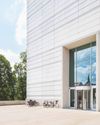Beyond The Punch List
Metropolis Magazine
|November/December 2018
Post-occupancy evaluations are still not common practice. What might accelerate their adoption?

On the eve of a massive building campaign for which universities planned to invest billions in new student housing, two architects undertook an unprecedented study of what students needed and wanted. Talking to residents and observing their habits in detail, they found that the typical new dormitory design was woefully inadequate. Public space was underutilized, personal space was inflexible, and housing was isolated from other functions on campus. Dorms were cold and impersonal— “as homey as a Greyhound bus depot,” according to one student—and surveys revealed that many inhabitants felt “stifled” and even “enraged.” Proposing an alternative, mixed-use approach that offered greater variety and more flexibility, the architects found that universities could significantly improve the student experience at two-thirds the cost.
That was 50 years ago. Sim Van der Ryn and Murray Silverstein’s groundbreaking research, published in 1967 as Dorms at Berkeley: An Environmental Analysis, was possibly the first formal example of what came to be called post-occupancy evaluation (POE), the process of assessing buildings after the fact. “There is no feedback channel between planning assumptions and building use,” they declared. “Our focus is on the silent partner in the design process—the user affected by design decisions.”
Today, POEs vary widely in scope, but generally they focus on two basic questions: Is the building behaving as intended? And are occupants happy with the results? Studies consistently show correlations between the two; a report last year indicated that 88 percent of building-performance attributes directly affect user satisfaction.
このストーリーは、Metropolis Magazine の November/December 2018 版からのものです。
Magzter GOLD を購読すると、厳選された何千ものプレミアム記事や、10,000 以上の雑誌や新聞にアクセスできます。
すでに購読者ですか? サインイン
Metropolis Magazine からのその他のストーリー

Metropolis Magazine
No New Buildings
The energy already embodied in the built environment is a precious unnatural resource. It’s time to start treating it like one.
7 mins
November/December 2019

Metropolis Magazine
The Circular Office
Major manufacturers are exploring every avenue to close the loop on workplace furniture.
1 mins
November/December 2019

Metropolis Magazine
Signs of Life
Designers, curators, and entrepreneurs are scrambling to make sense of motherhood in a culture that’s often hostile to it.
7 mins
November/December 2019

Metropolis Magazine
Interspecies Ethic
In probing the relationship between humans and nature, two major exhibitions question the very foundations of design practice.
6 mins
November/December 2019

Metropolis Magazine
Building on Brand
The Bauhaus turned 100 this year, and a crop of museum buildings sprang up for the celebration.
8 mins
November/December 2019

Metropolis Magazine
Building for Tomorrow, Today
Radical change in the building industry is desperately needed. And it cannot happen without the building trades.
6 mins
November/December 2019

Metropolis Magazine
Strength from Within
Maggie’s Centres, the service-focused cancer support network, eschews clinical design to arm patients in their fight for life.
5 mins
October 2019

Metropolis Magazine
Next-Level Living
The availability of attractive, hospitality-grade products on the market means everyday consumers can live the high life at home.
1 mins
October 2019

Metropolis Magazine
Mi Casa, Su Casa
Casa Perfect creates a memorable shopping experience in lavish private homes.
1 min
October 2019

Metropolis Magazine
Enter The Culinarium
AvroKO imagines the future of residential amenities—where convenience, comfort, and sustainability meet.
5 mins
October 2019
Translate
Change font size

